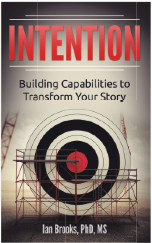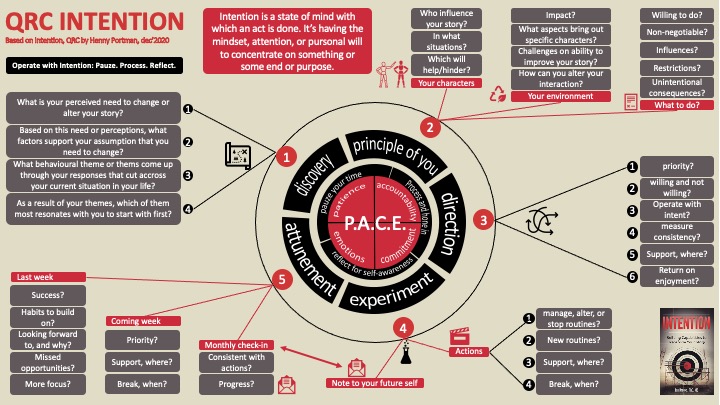Two weeks ago, I received a blurb request. “I saw on your blog that you reviewed Switch: How to Change Things When Change Is Hard, and I’d like to ask whether you’d be willing to consider giving a blurb to a similar book”.

The book ‘Intention: Building Capabilities To Transform Your Story’ is written by Dr. Ian D. Brooks. This book provides direction for leveraging our greatest ability to realize change by expanding our personal awareness and taking specific action. This is a book outside my comfort zone but a training class was rescheduled due to Covid-19 regulations, so I started reading.
Business agility is key, and many organizations started some years ago with the implementation of Scrum. Soon it became clear that when working with more teams you need some form of coordination and these organizations started to implement a scaled agile framework to manage e.g. the team dependencies. But the results were for many organizations still disappointing. Study after study showed that for those organizations, among other factors, their organizational culture was at odds with agile values. New frameworks popped up to use together with the scaled agile frameworks to work on this agile culture. In my ‘bird’s eye view on the agile forest’, I already covered more than 80 agile ways of working including those culture targeted frameworks. But it looks like we still haven’t found the silver bullet, agile transitions fail in many cases. I see for example management teams struggling with the product owner role. And then a senior manager said to his colleagues … ”Yeah sure PO, you have a mandate” and they started laughing. They don’t trust the teams, they don’t empower the teams, they aren’t willing to decentralize decision-making, and facilitating leadership doesn’t belong to their vocabulare. And that brings me back to this book. Will this be the missing piece to help senior managers to transform themselves towards a manager that supports an organization on its agile journey? It could be the case, but only when these managers pick up the gauntlet to work on themselves.

In this book, the author helps you to make your own personal transformation. This can be work-related as mentioned earlier when you are part of your journey to more business agility but could also be a much more personal non-business-related goal, e.g., losing weight.
The author defines intention as a state of mind with which an act is done. It’s having the mindset, attention, or personal will to concentrate on something or some end or purpose. Intention provides a priority of wants and needs that offers us direction, but it is flexible enough to meet changes in your environment, circumstances, or life.
Changes are important individual actions, but also lead to bigger behavioral outcomes and results. Changes tend to be event-driven. Transformations are the collection of changes that lead to a broader outcome. Thus, the actions become a newly adopted lifestyle, a new way of life.
He uses a framework to help you to make the necessary steps to transform yourself in the direction you set for yourself based on five capabilities to use iteratively:
- Discovery: The intention is to expand your awareness beyond the challenges presented, exploring deeper into what you wish to solve.
- Principle of You: What we identify as targets of change usually overlook acknowledgment of who we are inherently and the symbols we associate with our pasts.
- Direction: Here, you will intentionally plan a transformation specific to you and practice forethought toward developing behaviors and routines that will move you forward.
- Experience: This capability is usually where changes first become noticeable. It focuses on acting in the now and regulating emotions that may arise at the moment.
- Attunement: This allows you to reflect on progress and learn from adjustments for building consistency in new behaviors.
It is important to realize, however, that the building and refinement of your capabilities will occur over time, not in a singular moment. To build capabilities over time, transformation requires management of your P.A.C.E. (patience, accountability, commitment, emotions).
There will be times when the emotion from what you discover is daunting and you will rush to quick conclusions. To address these thoughts and manage your P.A.C.E. You need to operate with intention: pause your time, process, and reflect for self-awareness.
Conclusion. If you want to transform your behavior, e.g., move away from a command-and-control management style to a more facilitating leadership style or non-business/private personal behavior, this book offers you a framework, steps to take, points of attention, advice, and many real-life examples to support you in your journey. For sure you will have thoughts and actions you want to change but always postpone and then this book could be the trigger to make your next move.
To order: Will be available in March 2021
















Pingback: Quick Reference Cards in 2020 | Henny Portman's Blog
Pingback: Ian Brooks — Intention Book Publicity Case Study | Coriolis Company